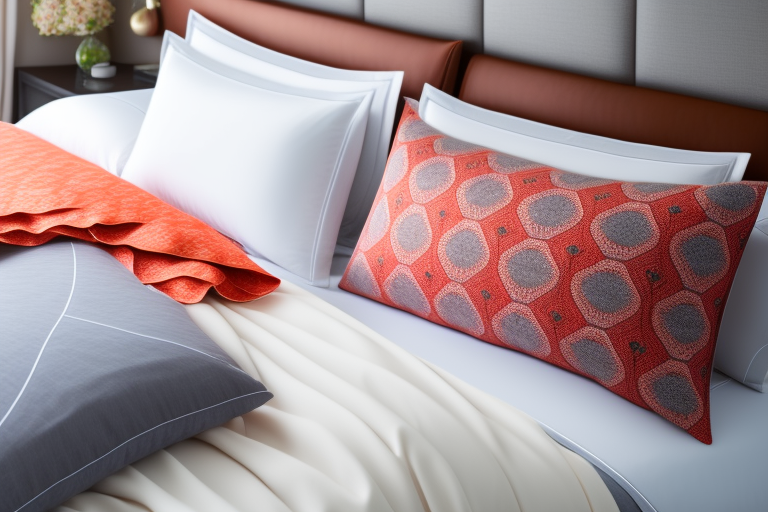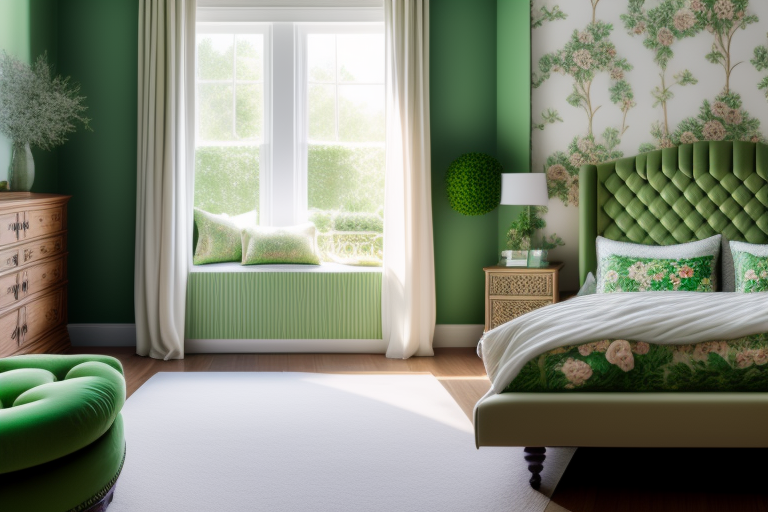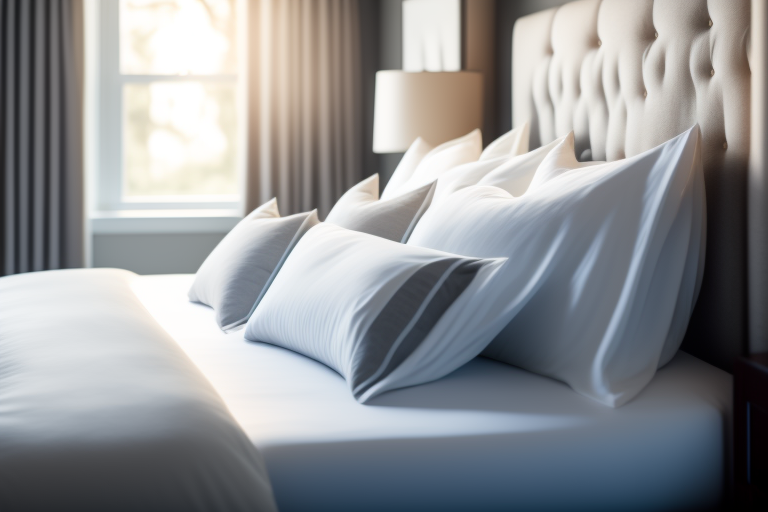Getting a good night’s sleep is essential for your health and well-being. The right bedding can make all the difference in helping you sleep more soundly and wake up refreshed. If you’re looking to upgrade your bedding or buy bedding for the first time, this beginner’s guide will walk you through everything you need to know to find the best bedding for your needs and style.
An Introduction to Bedding
Your bedding includes all the fabrics and textiles that dress your bed, including your sheets, pillows, comforter or duvet, and blankets. Having high-quality bedding not only improves your sleep comfort, but also brings an aesthetic coziness to your bedroom decor.
Bedding has been around for centuries, with the earliest known examples dating back to ancient Egypt. Royalty slept on lavishly decorated beds with linen sheets and cushioned headrests. Through the ages, beds and bedding grew more elaborate among nobility and the upper class as a symbol of status.
Today, bedding comes in a wide variety of styles, materials, and price points to suit any budget. The bedding you choose makes a statement about your personal taste. This guide will highlight all the different bedding options available and provide tips for choosing pieces that will create your ideal sleep sanctuary.
The Main Types of Bedding
The foundation of any good bed is high-quality bedding. Here are the main categories of bedding and the different options available in each:
Sheets
Sheets -the layer of fabric that covers your mattress- come in a variety of materials:
- Egyptian Cotton: Prized for its durability, breathability, and soft texture. Pima or Supima Egyptian cotton offers an ultra-luxurious feel.
- Microfiber: Affordable option that is soft, wrinkle-resistant, and easy to launder. Can trap heat since it’s not very breathable.
- Flannel: Made from brushed cotton for insulation and warmth. Best for cold weather.
- Linen: Natural fabric that keeps sleepers cool but can wrinkle easily. Has a casual, rumpled look.
- Silk: Extremely smooth, temperature regulating, and moisture wicking. More high maintenance but luxury feel.
300-500 thread count is ideal – higher thread counts don’t necessarily mean better quality.
Comforters
Comforters provide loft and warmth to your bedding ensemble. Fill options include:
- Down: Premium down feathers are lightweight, fluffy, and offer superior warmth. More expensive but luxurious.
- Down Alternatives: Synthetic microfibers mimic properties of down at a more affordable price. Less fluffy and warm but still insulating.
- Wool: Natural wool fill offers warmth in winter and cooling in summer. Eco-friendly and moisture wicking.
- Cotton: Breathable and hypoallergenic cotton comforters with good warmth-to-weight ratio. Budget-friendly option.
Choose fill based on your climate conditions and budget. Comforters often used with duvet covers.
Duvet Covers
A duvet cover protects your comforter and adds a decorative layer to your bed. Key features:
- Materials: Cotton, linen, silk, microfiber, polyester, wool, etc.
- Closures: Buttons, snaps, zippers, ties, hidden closures.
- Sizes: Twin, full/double, queen, king, California king.
Match duvet size to comforter. Remove cover to easily wash.
Pillows
Supportive pillows promote spinal alignment and accommodate your sleep position. Different fills to consider:
- Memory foam: Contouring foam relieves pressure points.
- Latex: Provides both softness and support for neck comfort.
- Feather/down: Light, squishy pillows that compress easily and regain shape.
- Polyester microfiber: Affordable synthetic pillows that hold shape well.
- Buckwheat: Adjustable hulls make these pillows firm yet flexible.
Side sleepers need thicker pillows for neck support.

Bedding Accessories for Added Comfort
To complete your bedding setup and enhance your sleeping experience, consider adding these bedding accessories:
Mattress Toppers
Placed over your mattress before sheets, toppers can make beds softer or firmer. Materials like memory foam, down, and wool increase comfort.
Blankets
Layer lighter blankets at the foot of the bed for cozy warmth. Choices include electric blankets, weighted blankets, fleece, cotton, wool, and more.
Bedspreads
Decorative bedspreads like matelassé, chenille, and quilted styles add texture and style over your sheet-covered mattress.
Bed Skirts
Fitted skirts around the base of your bed hide box springs and bed legs for a polished, finished look.
Tips for Choosing the Best Bedding for You
Now that you know about all the bedding basics, here are some key factors to consider when shopping for bedding:
Comfort
Make sure bedding fabrics feel soft and breathable against your skin. Test out materials and thread counts in stores. Be wary of excessively high thread counts.
Durability
Look for resilient fibers and tight, even stitching that will hold up over time and repeated washing. Stronger fabrics are better long-term investments.
Price
Bedding can range from $50 to $1000+ for a full set. Setting a reasonable budget will help narrow your options. Sales help cut costs.
Style
Pick colors, patterns, and designs that match your personal style and complement your bedroom decor. White or solid neutrals offer flexibility.
Maintenance
Check if bedding needs special laundering.machine washable, no-iron fabrics make bedding care easier.
Seasonality
Choose natural fibers like cotton and linen for warm months. Add flannel sheets and wool blankets as the temperatures drop.

Matching Your Bedding to Your Decor
When designing your dream bedroom, it’s important that your bedding ties in seamlessly with the overall aesthetic.
Color Scheme
Match the colors in your bedding to the wall paint, furniture, rugs, and other decorative accents around the room. A cohesive palette looks pulled together.
Patterns and Textures
Introduce visual interest through prints, embroidered details, tufting, ruffles, and varying fabric weaves. Combining patterns takes skill – start with solids and subtle textures instead if unsure.
Different Seasons, Different Bedding
Transition your bedding as the seasons change for functionality and a fresh decorative change.
Warmer Months:
- Light, breathable cottons and linens
- Cooling mattress toppers
- Lightweight blankets at foot of bed
Colder Months:
- Flannel sheets, wool blankets
- Warming mattress pads
- Down or wool comforters
Caring for Your Bedding
Investing in quality bedding means nothing if you don’t properly care for it. Follow these tips:
- Read care tags: Instructions vary for different fabrics. Check before washing.
- Wash regularly: Every 1-2 weeks for sheets, duvet covers, and pillowcases. Only spot treat comforters and duvets as needed.
- Wash in cold water: Hot water can damage and shrink fibers. Use a gentle detergent suited for bedding.
- Tumble dry low or hang dry: High heat can break down materials. Lay flat to dry instead.
- Iron as needed: Touch up wrinkles in linen and cotton with medium heat. Turn silk and synthetic fabrics inside out iron on low.
Store properly: Fold and keep bedding sets in breathable storage bins.
Time to Replace Your Bedding?
Here are some signs it may be time to refresh your bedding:
- Threadbare sheets with small holes
- Pillows that are flattened and don’t spring back
- Comforter with broken quilting stitches or poking filling
- Fitted sheets that no longer fit mattress
- Stains or yellowing from age and use
Ideally, aim to replace these items every 2-5 years:
- Pillows every 2-3 years
- Comforters every 5+ years
- Sheets every 2-5 years
Our Top 10 Picks for the Best Bedding
Ready to start shopping for new bedding? Based on our research, these are the top-rated bedding sets and pieces to buy in 2023:
| Product | Details | Price |
|---|---|---|
| Boll & Branch Signature Soft Set | 500 TC organic cotton sateen sheets, duvet cover, pillow cases | $450+ for queen |
| Brooklinen Luxe Core Sheet Set | 480 TC long-staple cotton | $175+ for queen |
| Buffy Cloud Comforter | Eucalyptus fiber down-alternative fill | $170+ for queen |
| Coyuchi Organic Cotton Duvet Cover | GOTS certified organic cotton, button closure | $248+ for queen |
| Saatva Down Alternative Pillow | Hypoallergenic microfiber fill, 3 firmness levels | $145 for queen |
| Snowe Home Linen Sheet Set | Stonewashed French flax linen | $260+ for queen |
| The Company Store Alberta Down Comforter | Baffle-box stitching, 550 fill power down | $399 for queen |
| Tuft & Needle Foam Pillow | Proprietary adaptive foam with cooling gel | $95 for queen |
| Woolroom Deluxe Wool Duvet | 100% wool fill with cotton cover | $399+ for queen |
| YnM Cotton Weighted Blanket | Glass beads in 7-layer structure | $50+ for queen 15 lbs |
Ready for Dreamier Nights?
We hope this beginner’s guide gives you all the details you need to start your search for the ideal bedding that will provide a beautiful backdrop for restful sleep. Take your time and enjoy exploring the wide world of sheets, duvets, pillows and more. The investment will pay off in nightly comfort.
Your cozy bed oasis awaits – sleep well and dream big!
Additional Resources:
Sleep Foundation’s Guide to Bedding
Good Housekeeping’s Top Bedding Picks
Frequently Asked Questions
What thread count is best for sheets?
Generally, a thread count between 300-500 is ideal for most sheets. Higher thread counts above 600 don’t necessarily mean better quality. Focus more on the fabric and weave.
How often should you wash bedding?
Wash sheets, duvet covers, and pillowcases every 1-2 weeks. Only spot clean comforters and duvets every 6 months to 1 year. Wash blankets and quilts a few times per year.
What’s better – down or down alternative comforters?
Down comforters are warmer and more luxurious but more expensive. Down alternative comforters with synthetic fills like microfiber are hypoallergenic and cheaper but less fluffy.
How do I choose the right pillow firmness?
Side sleepers need thicker, firmer pillows to properly align the neck. Back sleepers do better with thinner, softer pillows. Adjustable fills like memory foam or buckwheat allow custom firmness.
Should I use a mattress pad under my sheets?
Mattress pads or toppers can extend the life of your mattress and improve comfort. Look for breathable cotton, wool, or memory foam mattress toppers under $50-$150.








